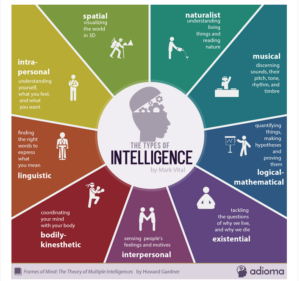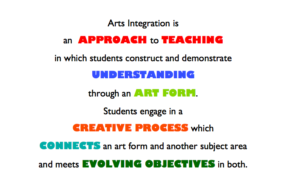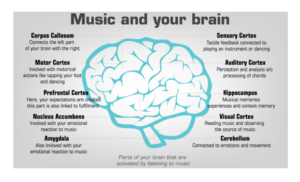The following post is based on my recently-delivered workshop on Music and Early Literacy for the Children’s Music Network.
Arts education and arts integration (defined below) are both critically important! Musicians and other artists need to be strong advocates for arts in education. We can make our case by offering some of the following points. Putting more arts into education will help:
Create a new educational model
Education must move away from teaching to a standardized-test model. Educators must emphasize creativity, teamwork, and responding with critical thinking to open-ended questions.
Successfully address a variety of learning styles
Howard Gardner’s landmark work on multiple intelligences is increasingly relevant in the 21st Century world. Education must be able to encompass differently-abled individuals, serving those whose learning style is visual, kinesthetic, or musical, among several others.
Teaching the arts, and teaching other subjects through the arts (Arts Integration) are essential tools for meeting these critical guideposts for the future of education. Here is a good working definition of arts integration.
Source: The Kennedy Center’s Changing Education Through the Arts (CETA) informational flyer. Authors, Lynne B. Silverstein and Sean Layne © 2010.
Why Music for Children?
Music is good for your heart. Music is great for how you feel inside. If you’re making good music with people around you, you feel connected to them and you feel connected to your own soul. And that’s true whether you’re three or a hundred and three.
“It is no coincidence that music is of central importance in so many cultures of the world. To many, music is not just an important part of life – it is life itself. Music is alive and by singing and creating sounds, we become more alive.”
- Choral Director Nick Page, author of Music As a Way of Knowing
“When music enters our classroom, the mood can shift in a moment. Joy erupts. New thoughts and feelings are shared. What was stuck can become unstuck. Moreover, we reach the place where children construct their basic social understandings.”
- Sarah Pirtle, award-winning children’s songwriter & educator, in Linking Up, a collection of musical lessons for building classroom community
Music is Good for Your Brain. Music and movement are working many parts of the brain simultaneously, thus stimulating brain development and especially helping build the areas of the brain oriented toward music, language and the sense of hearing.
In This is Your Brain on Music (2006), neuroscientist Daniel Levitin shows that nearly all parts of the brain are utilized in processing musical experiences. In “The Music Instinct,” Levitin leads a group of researchers as they investigate music’s fundamental physical structure; its biological, emotional and psychological impact; its brain altering and healing powers and its role in human evolution. The video also features the insights of musicians such as cellist Yo-Yo Ma and jazz singer Bobby McFerrin.
Source: Maike Oyen,van, Music to Our Ears, Medium, June, 2016. https://medium.com/@Tells_a_Story/music-to-our-ears-4e6127a062ee







